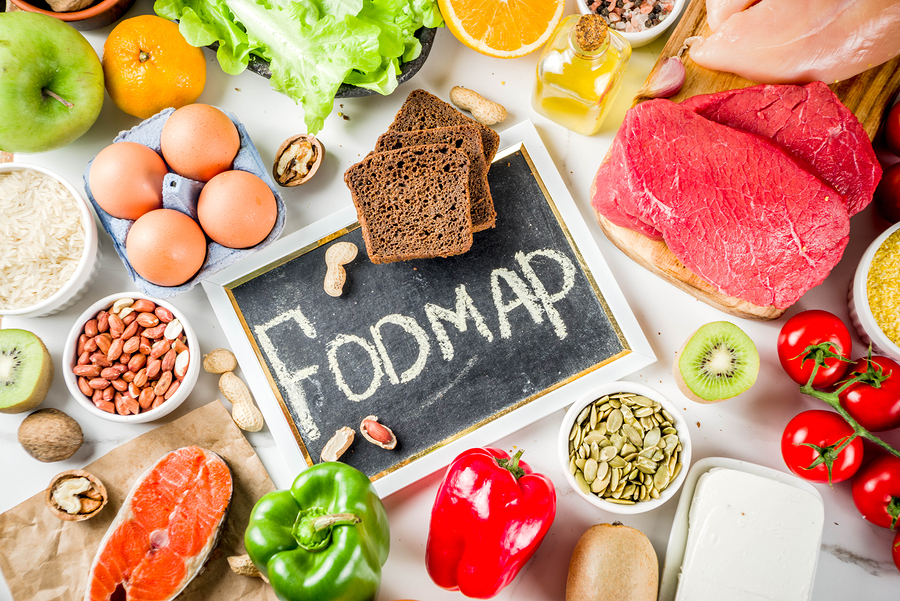Digestive complaints are among the most common health concerns. If you’re experiencing distress, a holistic practitioner will evaluate the foods and substances you are eating to identify where a reaction exists. There are many ways to conduct a dietary analysis, including food diary, food allergy testing, muscle testing, and elimination diets. The FODMAP Diet is often recommended by healthcare practitioners.
What is a FODMAP?
FODMAP stands for fermentableoligo-, di-, mono-saccharides and polyols. This scientific term is used to identify groups of carbohydrates – also known as “fermentable carbs” – that trigger digestive problems such as bloating, gas, abdominal pain, constipation, or diarrhea.
FODMAPS in Food?
You will find FODMAPS in a variety of foods:
- Oligosaccharides: in wheat, rye, legumes, garlic and onions.
- Disaccharides: in milk, yogurt and soft cheese. Lactose (milk sugar) is the main carb culprit.
- Monosaccharides: in many different fruits, including fig and mango, and sweeteners such as honey and agave nectar. Fructose (fruit sugar) is the main carb culprit.
- Polyols: in blackberries and lychee, as well as some low-calorie sweeteners like those in sugar-free gum.
Why the Low-FODMAP Diet?
Research and clinical experience demonstrate that following a diet low in fermentable carbs reduces digestive distress, improves enjoyment of eating, and supports gut health by promoting the growth of good gut bacteria.
Starting a Low-FODMAP Diet
There are several stages, briefly outlined here:
Stage 1: Restriction of high-FODMAP foods. This involves strict avoidance of foods that have been identified or are suspected to be irritants to the digestive system. This stage lasts eight weeks for most people. You will record food intake and monitor symptoms and health variables, which you will discuss with your doctor/ nutritionist.
Stage 2: Reintroduction. You systematically reintroduce high-FODMAP foods to learn which ones you can tolerate and in what amount, or if you are sensitive to several/ all FODMAPS.
Stage 3: Personalization. With the data collected in the first two stages, you and your health practitioner will establish a personalized low-FODMAP diet. You will progress over time to ensure you have a diet that is flexible, manageable, and provides a variety of nutrients and flavors.
Remember: check with your health practitioner before you try adopting this diet because it has to be customized to your specific food intolerances/ allergies.
References
- Marsh, A., Eslick, E.M., Eslick, G.D. “Does a diet low in FODMAPs reduce symptoms associated with functional gastrointestinal disorders? A comprehensive systematic review and meta-analysis.” European Jl of Nutrition(2016 April) 55:3, 897-906. Accessed 12 Feb 2019: https://link.springer.com/article/10.1007%2Fs00394-015-0922-1
- Staudacher, H.M., Lomer, M.C.E., et.al, “Fermentable Carbohydrate Restriction Reduces Luminal Bifidobacteria and Gastrointestinal Symptoms in Patients with Irritable Bowel Syndrome.” Journal of Nutrition, (1 August 2012) 142: 8, , 1510-1518. Accessed 12 Feb 2019: https://doi.org/10.3945/jn.112.159285
- Healthline.com “A Beginner’s Guide ot the Low-FODMAP Diet.” Posted by Rossi, M. (2017 Mar 15). Accessed 12 Feb 2019: https://www.healthline.com/nutrition/low-fodmap-diet
- StanfordHealthCare.org “Low Fodmap Diet.” Accessed 12 Feb 2019: https://stanfordhealthcare.org/medical-treatments/l/low-fodmap-diet.html
- KateScarlata.com “Low and High FODMAP Diet Checklists.” Accessed 12 Feb 2019: http://www.katescarlata.com/lowfodmapdietchecklists/

